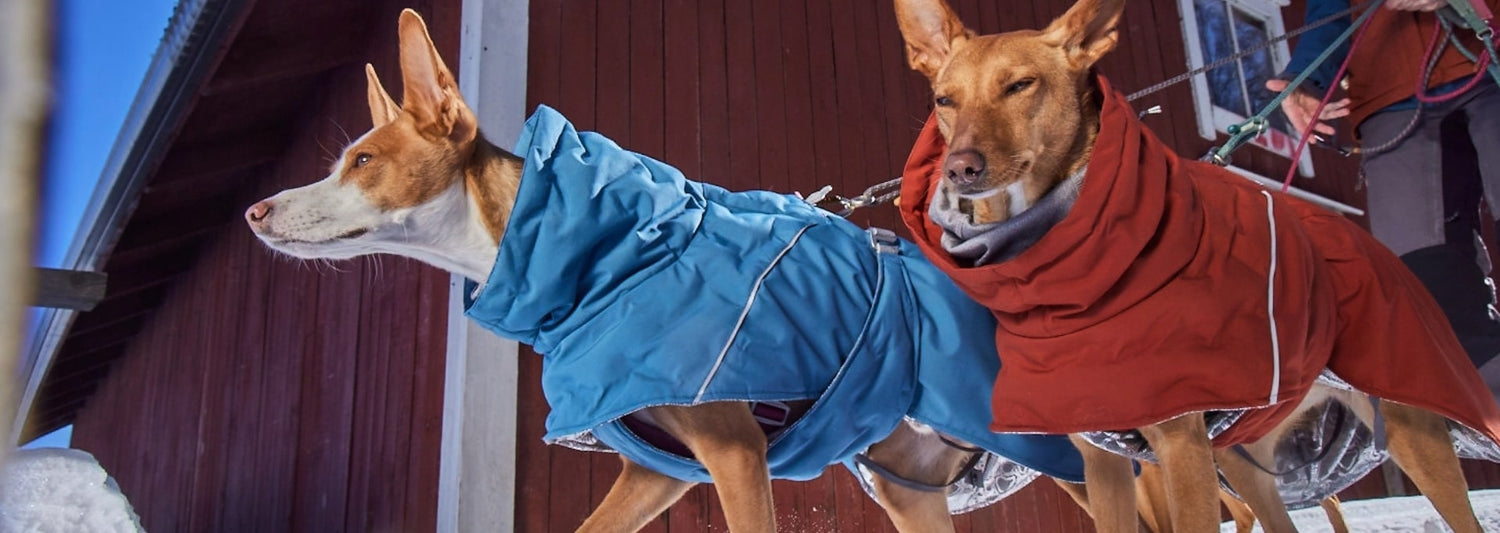Breed and temperament matter
Similar to many decisions you will make for your dog, safety is the most important factor in determining when and where it is appropriate to let your dog off the leash. Consider your dog’s personality along with any tendencies typically associated with your dog’s breed. Breed alone is not an accurate predictor of a dog’s personality, but Terriers and Hounds, for example, are breeds with a high prey drive which can make them a serious flight risk if off-leash in an area where they may encounter small prey animals.

Extreme Warmer III ECO
Updated with recycled materials and enhanced performance and wearability, our warmest coat now offers even more protection for winter’s coldest temps.
When dogs are not on a leash, they are better able to explore the environment at their own pace. In particular, long, peaceful runs freely in forest terrain, where the dog can sniff and explore the environment, relieve a dog’s stress and speed up the dog’s recovery from training-related stress or simply from everyday life, including interacting with other dogs. You can also learn to control or channel a dog’s prey drive. However, even well-trained dogs can behave unexpectedly. You have to consider that letting your dog off leash could lead to your dog running off, becoming startled or distracted, or even getting injured or lost.
Also, familiarise yourself with local legislation regarding leash requirements, as there may be rules governing when a dog must be leashed. Also, in some areas, during the nesting season of birds and animals, dogs should be kept on a leash or owners should be ready to leash them immediately to avoid interfering with wildlife.

How to know when your dog is ready to roam freely
Ideally, an off-leash dog will come to you when called, no matter what the distraction. Also, dogs that are allowed to roam freely in off-leash areas should not approach people or other dogs, unless you are in a dog park where such behaviour is more expected. Just keep in mind that it’s normal for some dogs to feel uneasy and cautious when approached by unfamiliar dogs.
It’s best to prepare your dog for off-leash behaviour in advance. Teach your dog to respond to your call in a location with minimal distractions. Then gradually progress to practising this command with your dog in increasingly distracting environments.

Weekend Warrior Warming Harness ECO
The Warming Harness ECO features an innovative foil lining that reflects a dog's body heat back to the dog. The harness is suitable for use as an additional heat generator for dogs that become too cold easily, especially short-haired and elderly dogs.
While practising without a leash it’s important not to punish your dog if they are slow to respond to your call. Instead, reward them for staying close to you. Remember, for your command to be effective, your dog needs to prioritise obeying you over exploring the new, open area they’ve gained access to. Reward your dog and then allow them to resume off-leash play. This approach will foster trust and should lead to more successful off-leash experiences.

Practice with a long line
As part of your practice, you can let your dog drag a leash but also have a long-line leash on them as a safety back-up. If you do allow your dog to drag their leash, make sure you do so in a safe area where there is plenty of open space and their leash won’t get caught on anything. Keep a watchful eye on them. Long-line leashes tend to measure in length from 3 to 5 metres (10 to 50 feet), and they should be made from durable materials that can stand up to the elements.
A long-line leash will work best with a well-fitting dog harness that has a strong leash ring on the back or top of the harness. This allows the dog to move more freely and keep the force of pulls away from the dog’s neck. Also remember to check your local ordinances as some parks and recreation areas do not permit leashes longer than 1,8 metres (6 feet).

Choose a safe off-leash location
Here are a few places where you can enjoy some off-leash time with your dog:
- A yard or space with a secure fence
- A public park, beach or recreation area that clearly states that dogs can be off-leash
- Fenced-in area of a dog park
Not everywhere is an off-leash safe space
Places where your dog should stay on-leash include:
- Unfenced yards and parks, including your own yard
- Areas in parks beyond off-leash boundaries or past designated times
- City streets and sidewalks
- Nature trails and beaches not posted as off-leash areas
- State and national parks
- Livestock and reindeer husbandry area

A leash doesn’t have to mean no freedom
Even if your dog learns proper off-leash behaviour, it’s not a bad idea to use a leash when you visit a new or bustling area.
Especially if your dog doesn’t seem to want to respond to your call, or if they appear to display signs of fear or stress around other dogs. Especially when encountering other dogs or people, it’s polite to call your dog back so it can be leashed again quickly. It’s good to remember that some people are afraid of dogs, and not all dogs are dog-friendly.
Take the time to ensure that your dog is ready for an off-leash outing. It’s perfectly acceptable to acknowledge that going off leash might not be the right choice for your dog. Such a decision demonstrates your concern for your dog, other people, and their dogs. Even with a leash on, your dog can enjoy plenty of outdoor fun, get great exercise, and be fully content.
On/Off-leash snow-fun with our warmest jacket
Join our outdoor adventure and see the Extreme Warmer ECO in action.

